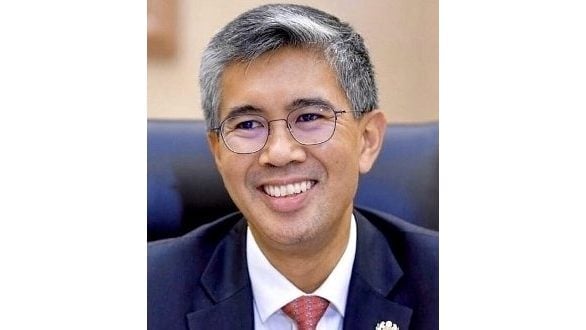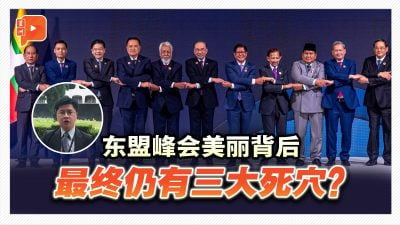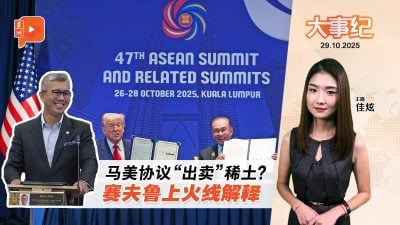
It’s not a stretch to say that the 47th ASEAN Summit and its related meetings were the most consequential—and successful—in our region’s history.
Last week, Malaysia played host to virtually the entire world, when political, business and civil society leaders from Africa, the Americas, Asia, Europe and Oceania descended on Kuala Lumpur.
Our well-attended ASEAN Summit bucked global trends. In a time of fragmentation, it was a feat to see the US, China, India, Russia, Brazil, South Africa and other countries congregate in our capital. It’s a timely reminder of ASEAN’s continued relevance not only as a bloc, but also as a neutral platform of engagement, and a convenor of major economies.
Understandably, Donald Trump stole the show, as did the Agreement on Reciprocal Trade (ART)—but these do not dilute the numerous achievements of Malaysia’s 2025 ASEAN Chairmanship.
A successful chairmanship
First: ASEAN is now 11-strong. It was an emotional moment and Malaysia is proud to have facilitated Timor-Leste’s signing of the Declaration of Accession.
Second, Ministry of Investment, Trade and Industry (MITI), together with other relevant ministries under the Economic Pillar, would be able to complete most of the 18 Priority Economic Deliverables (PEDs) by the end of 2025.
The quest to increase intra- and inter-regional trade received a major boost with the upgrade of the ASEAN Trade in Goods Agreement (ATIGA) and the ASEAN China Free Trade Area (ACFTA 3.0)—bringing us in line with the latest developments in the digital and green economies, and modern supply chain connectivity.
Furthermore, we’re confident that the Digital Economic Framework Agreement (DEFA), targeted to be signed next year, will provide policy clarity on all aspects of our digital economy, supported by energy security as envisioned by the ASEAN Power Grid (APG).
Malaysia also successfully hosted the 5th Regional Comprehensive Economic Partnership (RCEP) Summit—the first in-person meeting since it came into force.
Meanwhile, Malaysia concluded its FTA negotiations with dynamic South Korea—whose trade with us stood at RM100.74 billion (USD24 billion) in 2024. We hope this will enable stronger cooperation in areas like E&E, scientific equipment and artificial intelligence (AI).
All this shows that Malaysia—complementing ASEAN Centrality—remains able to engage all global blocs. We provided, on ASEAN’s sidelines, a venue for the US and China to convene, highlighting our role as a bridge-builder between nations.
We have not—and will not—abandon our decades-old geopolitical neutrality, or our unwavering support for a free and independent Palestine.
The ‘ART’ of ‘David’s trade negotiations with Goliath’
Which brings us back to the ART, as well as the Memorandum of Understanding (MoU) on Critical Minerals Cooperation Malaysia signed with the US.
In reference to all the analyses that have been offered post-signing of the ART, the key question is: would SMEs and workers in our Malaysia-US export ecosystem be better off losing access to our biggest export market (valued at almost RM200 billion)? To put things into a different context, the US has also been one of our biggest sources of foreign investments, which cumulatively stood at RM218.2 billion in approved investments in 2024.
The 19% tariff we achieved makes us level with our neighbours like Indonesia and Thailand, and even better than Vietnam and Bangladesh’s 20%.
But the real test of any agreement is always in its on-ground impact. How many jobs would we risk if we did not secure the 19% exemption for those goods?
What if we did not secure tariff exemptions for some 1,711 of Malaysia’s crucial export goods, including palm oil, rubber, cocoa, as well as some pharmaceutical components and aerospace equipment?
What would be the risk to these US-destined exports cumulatively valued at USD5.2 billion or 12% of our total exports?
Another equally important point is how the US will positively consider the ART in relation to the US Commerce Department’s Section 232 investigation under the Trade Expansion Act of 1962—which will essentially guide the Trump administration’s decision on tariffs on semiconductors, our biggest single export sector.
Furthermore, the US-Malaysia bilateral relationship is now a Comprehensive Strategic Partnership, putting us in a select group of nations, giving us a line of sight for technology transfers.
Malaysia has also been recognised as a trusted supply chain partner, which will enhance our economic competitiveness further.
Critique demands a voice, execution demands a vision and courage
Critique demands a voice; execution demands a vision, courage, and the scars of effort.
It’s regrettable to see selective readings and outright disinformation being used against the ART, particularly on clauses like Article 5.1, which has totally been spun out of context.
This Article only obliges us to act if we share common concerns, and any action taken will be based on our own Malaysian laws and our own timeline.
Article 5.1 effectively secures a continued ‘open window’ for potential grievances to be aired, discussed and resolved.
Neither does the ART prevent us from seeking commercial relations with any other country or grant exclusivity to the US in any way—including for rare earths.
As for the various commercial considerations—it must be reiterated that they are precisely that: goods or services Malaysian companies were already planning to procure—as well as capital investments they were going to make in the U.S. because the high returns on investments.
We’re not abandoning halal certification either but committing to facilitate the entry of US products that comply with the stringent standards set by the Department of Islamic Development Malaysia (JAKIM).
Our laws and ability to act as a sovereign nation are intact.
So is Malaysia’s capacity to protect its economy, workers and national agendas.
The government will never, ever compromise on these red lines.
The situation we found ourselves in was not ideal.
Almost all countries—including Malaysia—were hit with reciprocal tariffs and compelled to negotiate to preserve crucial market access.
The ART was about discharging the government’s ultimate duty: protecting millions of Malaysian livelihoods during a difficult time for the world. And it shall.
I must also reiterate that this one-of-its-kind situation we faced could not have been concluded without the dedication of our team of negotiators, pulling together different types of expertise and experience.
They worked tirelessly, within a record six months, to coordinate among ministries, agencies and the private sector, while working extremely hard to negotiate with DC before the deal was finalised. Malaysia owes them sincere thanks.
This was the best deal we could have gotten, on balance and for Malaysia’s long-term economic interest.
We achieved it through the government’s principled and pragmatic engagement.
Meanwhile, our work to move Malaysia up the economic value chain while diversifying our trade relations continues.
What Malaysia needs from all its people right now is unity and a shared sense of purpose to defend our nation, not partisanship or political opportunism.
The world will not be a bed of roses moving forward and walking this tightrope will not be easy. But this ART is, realistically and on balance, the only pragmatic way forward for Malaysia to not only survive, but also thrive.
(Tengku Zafrul Tengku Abdul Aziz is the Minister of Investment, Trade and Industry, Malaysia.)
ADVERTISEMENT
ADVERTISEMENT








































